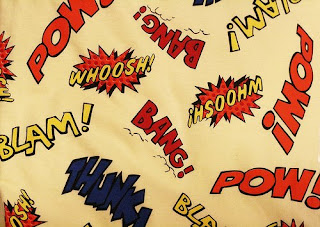
Your comments over the last 2 weeks have been truely amazing. MoMA gave its initial response. Next, I’m sending myself to Venice (yes, I pay my own way, D’oh!). Around June 17 we’ll re-engage & ask for a response from the Curator of the Perm. Coll. of P. & S. Ann Temkin. We won’t talk about the entire museum or new buildings. We will say it is time to install A LOT more work by women on 4 & 5 NOW, no matter what.
MoMA had noticed the thousands of comments on Saltz’s Facebook page and the outcry there was enough to galvanize an official response via Facebook!
 MoMA had responded to Jerry, per the below, thus opening a dialogue:
MoMA had responded to Jerry, per the below, thus opening a dialogue:
Jerry Saltz (New York, NY) wrote on June 3, 2009 at 1:49pm
This is to all of you from MoMA (you all need to ask yourselfs if this is enough; we also have to ask how we also have to ask how many TOTAL works of art MoMA counted to arrive at its figure; and what gallereis were excluded):
Hi all, I am (Kim Mitchell) Chief Communications Officer here at MoMA. We have been following your lively discussion with great interest, as this has also been a topic of ongoing dialogue at MoMA. We welcome the participation and ideas of others in this important conversation.And yes, as Jerry knows, we do consider all the departmental galleries to represent the collection. When those spaces are factored in, there are more than 250 works by female artists on view now. Some new initiatives already under way will delve into this topic next year with the Modern Women’s Project, which will involve installations in all the collection galleries, a major publication, and a number of public programs. MoMA has a great willingness to think deeply about these issues and address them over time and to the extent that we can through our collection and the curatorial process. We hope you’ll follow these events as they develop and keep the conversation going.
To which Jerry adds:
Jerry Saltz (New York, NY) wrote on June 3, 2009 at 2:01pm
A note to all of you: Now is NOT the time to “get tired” or back off. You all have MoMA on the line, right here, right now! Even if you contributed to previous conversations, you owe it to yourselves to say something HERE. Keep it SHORT, direct, and respectful. Artists, this is your chance. Even those of you just ‘listening in… Read More.’ Now is the time. I promisde you MoMA will not PUNISH you (if they do, tell me); it will RESPECT you for speaking up. All 4900 of you need to STEP UP NOW, otherwise …
So a comments section on a Facebook page has gotten the attention of MoMA, and opened a dialogue. This strange public campaign headed by Jerry Saltz, art critic by day, Knight-on-Charging-White-Steed by night, is going to discuss including more works by female artists in the permanent collection and is now trying to plan a letter. God help them, the thousands of them trying to decide on what exactly to say, which sounds near impossible, and, to be cynical, I would be shocked if MoMA actually did anything but talk with them.
Still it is an amazing use of social media as its most vocal, and it is amazing to think what is often idle, angry talk could generate something positive. I hope something comes of it. And all this from the man who doesn’t have a blog because it would be too much work…

 What’s the idiotic? Me, taking photos on my Iphone. Yes, I did get a lovely, HD Flip video camera for my birthday which would have beautifully conveyed the atmosphere and great music. But I left it at home. Why yes, I do have a handy digital camera that also shoots video as well as much better pictures than these. I left that at home too. I hadn’t planned on going to MoMA; I just felt like popping in.
What’s the idiotic? Me, taking photos on my Iphone. Yes, I did get a lovely, HD Flip video camera for my birthday which would have beautifully conveyed the atmosphere and great music. But I left it at home. Why yes, I do have a handy digital camera that also shoots video as well as much better pictures than these. I left that at home too. I hadn’t planned on going to MoMA; I just felt like popping in. 






 For a contemporary approach to automatic writing, look no further than MoMA’s recent acquisition. This untitled work, above, by British artist Jack Strange features a lead ball pressing down the g key indefinitely. (I was born the same year as the artist, 1984, and feel like I desperately need to catch up with someone who already has 2 works at MoMA!)
For a contemporary approach to automatic writing, look no further than MoMA’s recent acquisition. This untitled work, above, by British artist Jack Strange features a lead ball pressing down the g key indefinitely. (I was born the same year as the artist, 1984, and feel like I desperately need to catch up with someone who already has 2 works at MoMA!)